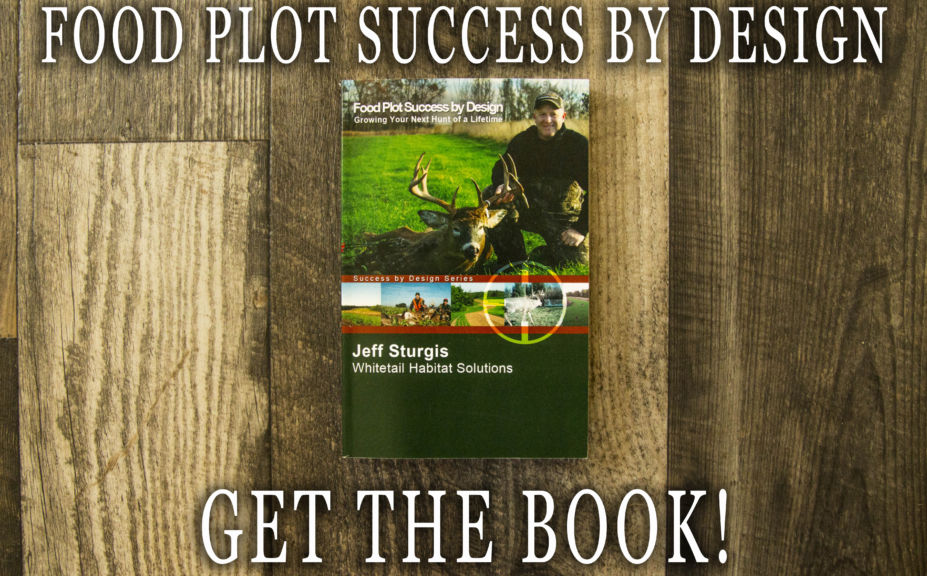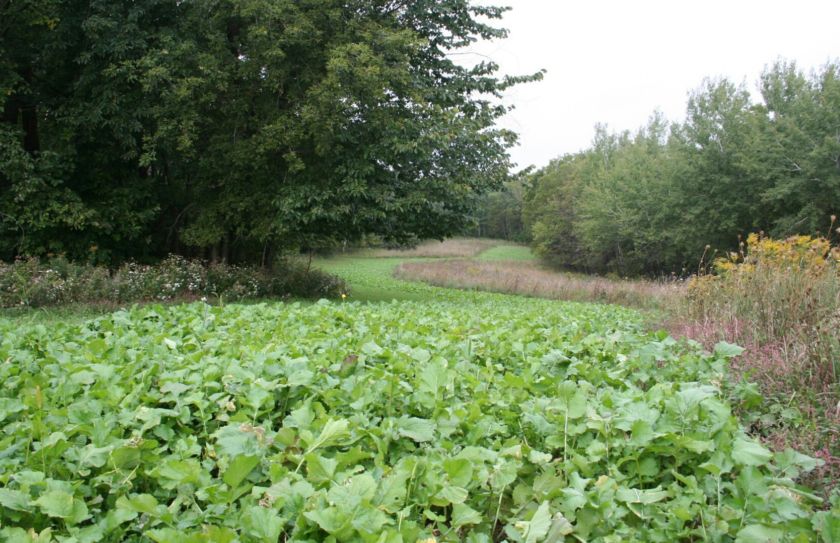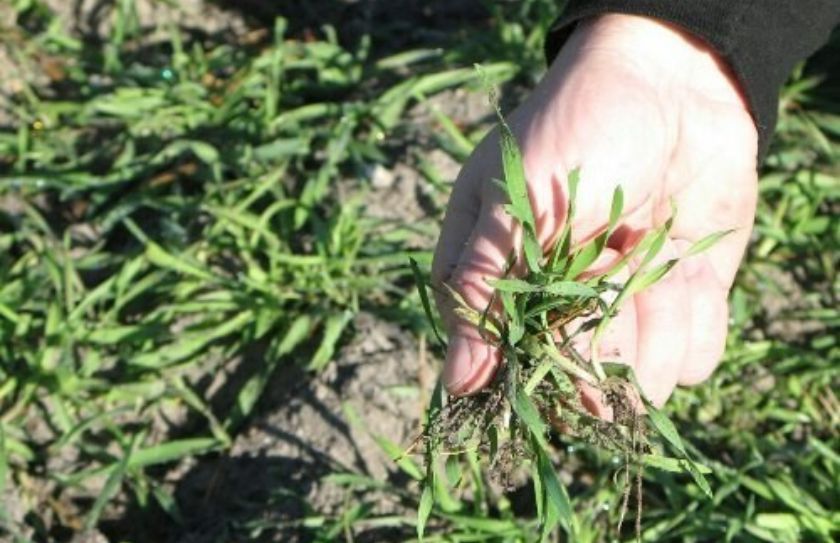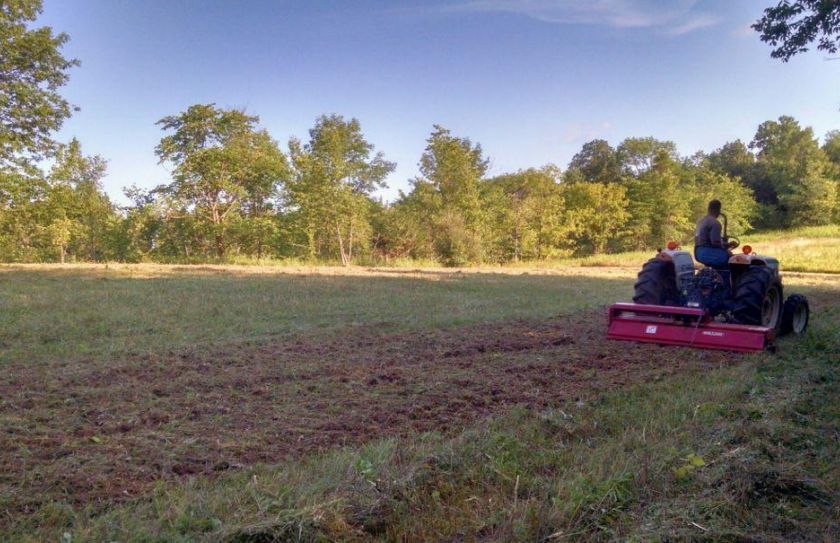
No disc, no tiller, no plow? No problem! Soybeans are an outstanding summer forage for deer and if there are beans still on the plants during a cold late November and December you can experience one of the most attractive food plot in the neighborhood.
Also, a standing bean field can be a great host to a late summer planting of winter rye by simply hand-broadcasting 200#s per acre into the beans around Labor Day. By using Round-up Ready beans you can also eliminate weed competition prior to any late summer plantings. What happens if your beans are browsed too heavily during the summer months? A late July broadcasting of a quality brassica blend into a weed-free and heavily browsed bean field can create an outstanding Fall to Winter plot that carries both a high level of attraction and nutrition. Rye, brassicas and many more varieties including clover, wheat and chicory can all be hand-broadcasted without the use of any heavy equipment by utalizing the exposed soil of a high quality summer base, of the No-Till Bean Plot. I first started to use Buckwheat in 2002 to do the same exact thing, as described in Progressive Food-plotting.

For more in depth food plot strategies, be sure to checkout my book, Food Plot Success by Design.
Here is a step-by-step guide to successful No-Till beans:
1. Your planting starts with a late Summer planting of Winter rye. I personally like to plant at least 200#s per acre to insure a solid base of young rye to work with the following Spring, not to mention a higher value of Fall volume, attraction and nutrition.
2. The following Spring, target a period of time prior to heavy rainfall and when the rye is at least 15" high. Rye will naturally out-compete and limit weed growth, but if you practiced adequate weed control the previous Fall you should have a solid platform of soil to work with while establishing your No-Till Bean Plot.
3. I like to broadcast a minimum of 70#s per acre of beans, which gives you well over 200,000 beans to cover the ground. This is roughly 50% more beans than the typically recommended rate but because of critters, sun exposure and varying levels of soil quality, germination rates will be significantly reduced. On light and sandy soils, an even greater amount of seed may need to be used and depending on the level of moisture following the planting, a No-Till Bean Plot may be very difficult to establish.
4. Immediately after the beans are broadcast you can spray Glyphosate at a rate of 2 quarts per acre to kill the rye without harming the beans. If a brush-hog or even a hand-held line trimmer is available, you can cut the rye prior to spraying to cover the beans to offer an even greater layer of protection. However if no cutter is present as was in the case of the above pictures, then cultipacking the sprayed rye with the ATV tires or lawn roller can be an adequate substitution.
-My personal choice for spraying Glyphosate from an ATV is adding 3 quarts to a 25 gallon sprayer of water, traveling approximately 7mph, and targeting an area of about 1 1/2 acres to kill.
-Out of a 4 gallon backpack sprayer I have added a 1/2 pint of Glyphosate to 4 gallons of water to kill an 1/8th acre.
5. After the beans have been broadcasted, the rye killed and either cut or cultipacked in some manner...all that is left to do is wait! If you are skeptical of the process, consider waiting until post emergence to fertilize. Broadcasting 200#s per acre of a fertilizer mix that includes zero Nitrogen like 0-14-42, can be a great choice without the aid of a soil test.
6. This is not "farming". What that means is that germination rates will be from fair to good, instead of great. I have seen "great" on a broadcasted/cut/sprayed plot but this is not the norm. However by adding 50% more seed to the initial planting you can help to overcome a portion of the loss of seed due to a lower rate of germination.
Conclusion
Establishing a No-Till Bean Plot is a great practice for folks who may lack the resources of traditional planting methods, or possibly even more importantly, "TIME". A summer bean plot can be used to establish a pattern of use within your food plots, but it also allows you to control weed growth and create planting options for various late Summer seed varieties. I encourage you to try the No-Till method and enjoy efficiency that it offers, as well as other highly advanced food plotting methods described in the book, Food Plot Success By Design.


